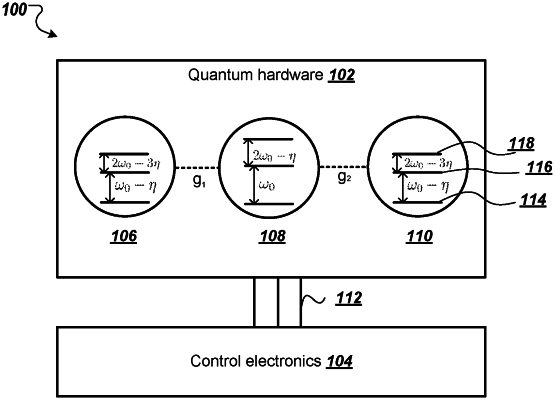| CPC G06N 10/00 (2019.01) [H10N 60/12 (2023.02)] | 30 Claims |

|
1. A method for implementing a three-qubit quantum gate on a quantum system comprising a first qubit, second qubit and third qubit, wherein the second qubit is coupled to the first qubit and to the third qubit, the three qubit quantum gate implementing a full or partial swap operation between the first qubit and the third qubit, the swap operation being conditioned on the second qubit being in an excited state, and assigning a minus sign to the swapped basis states, the method comprising:
evolving a state of the quantum system under a Hamiltonian describing the quantum system for a predetermined time, wherein during the evolving:
the ground and first excited state of the second qubit are separated by a first energy gap;
the first and second excited state of the second qubit are separated by a second energy gap that is equal to the first energy gap minus a qubit anharmoniticity;
the ground and first excited state of the first qubit and ground and first excited state of the third qubit are separated by a third energy gap that is equal to the first energy gap minus the qubit anharmonicity; and
the first and second excited state of the first qubit and first and second excited state of the third qubit are separated by a fourth energy gap that is equal to the first energy gap minus twice the qubit anharmonicity.
|